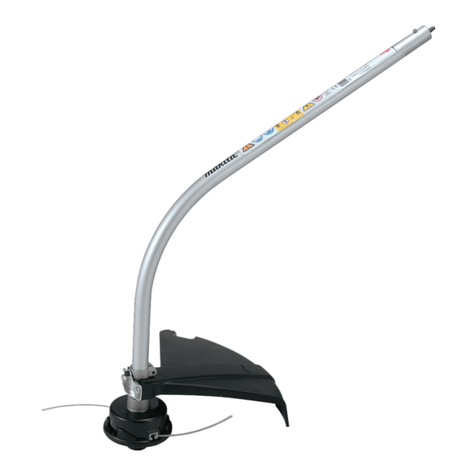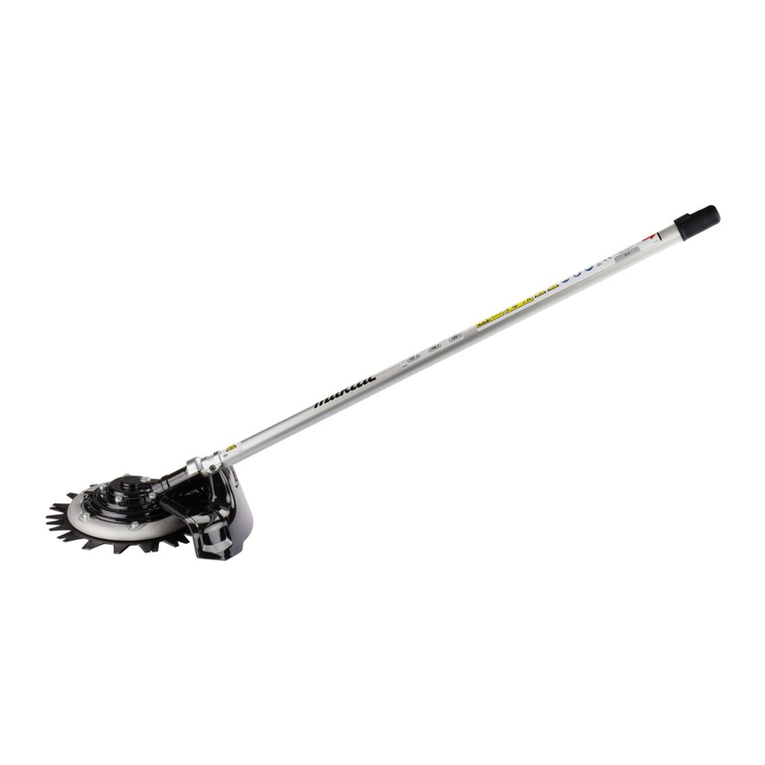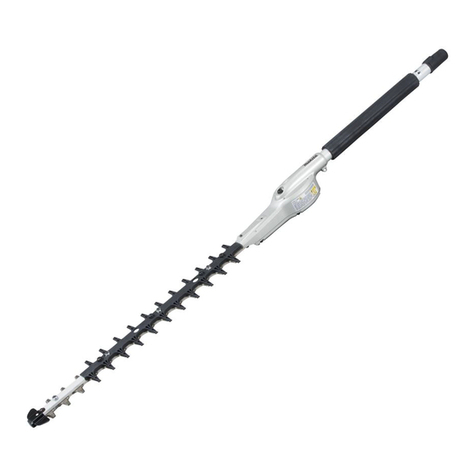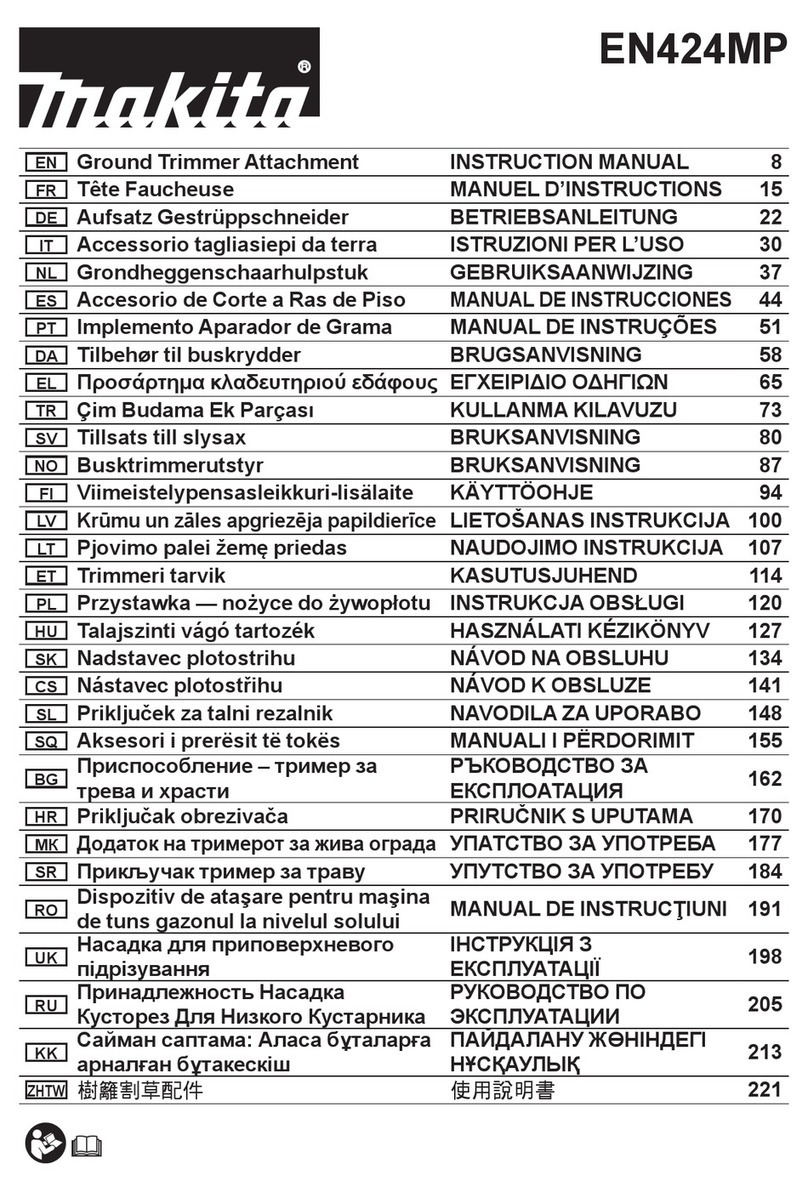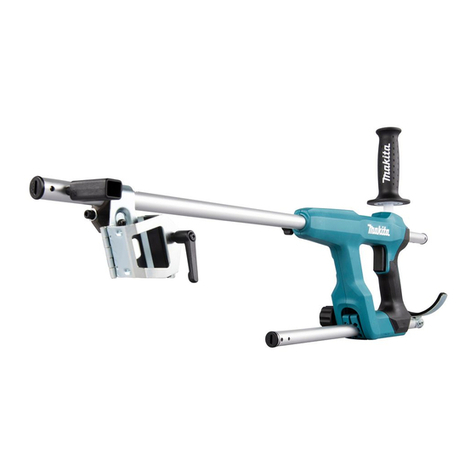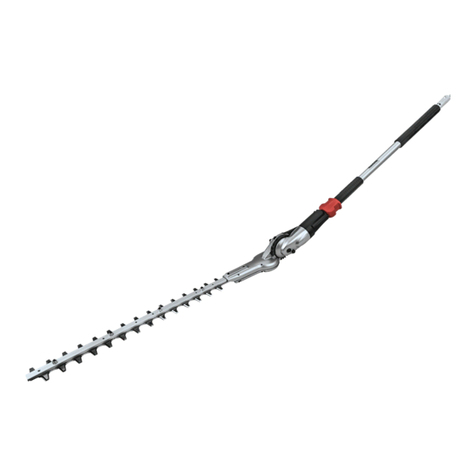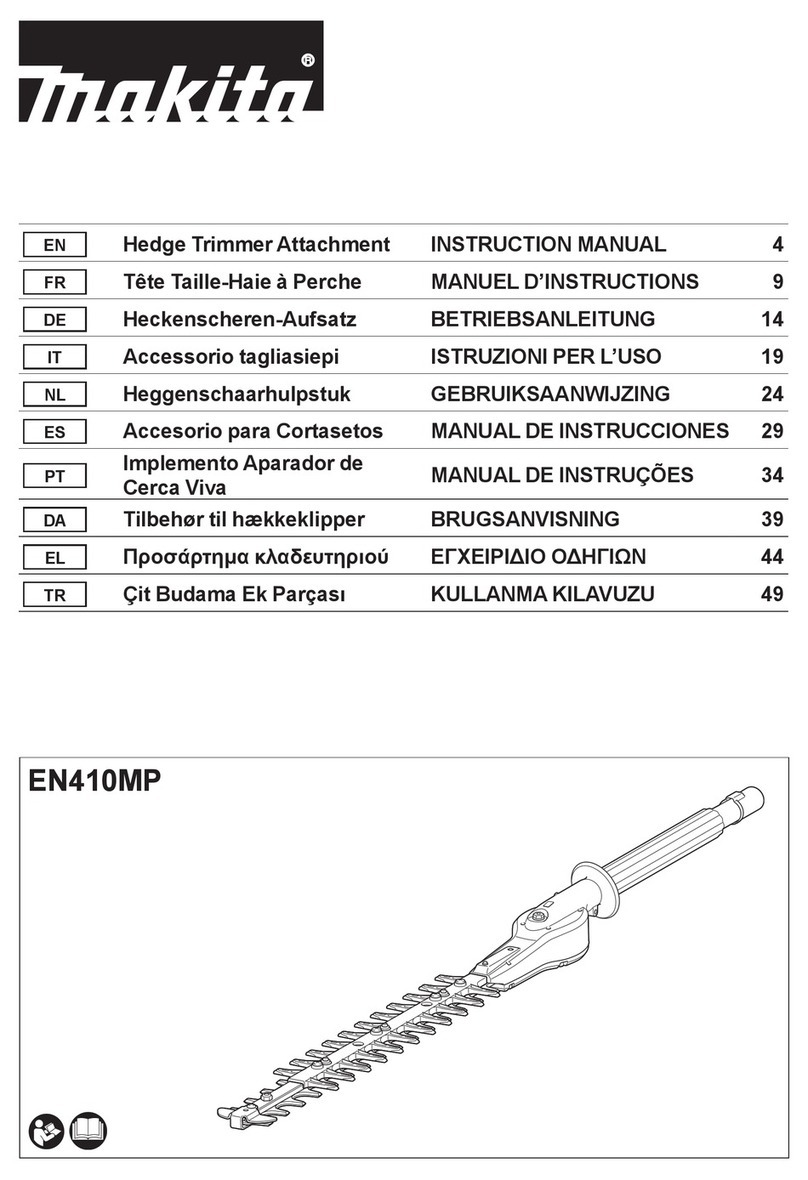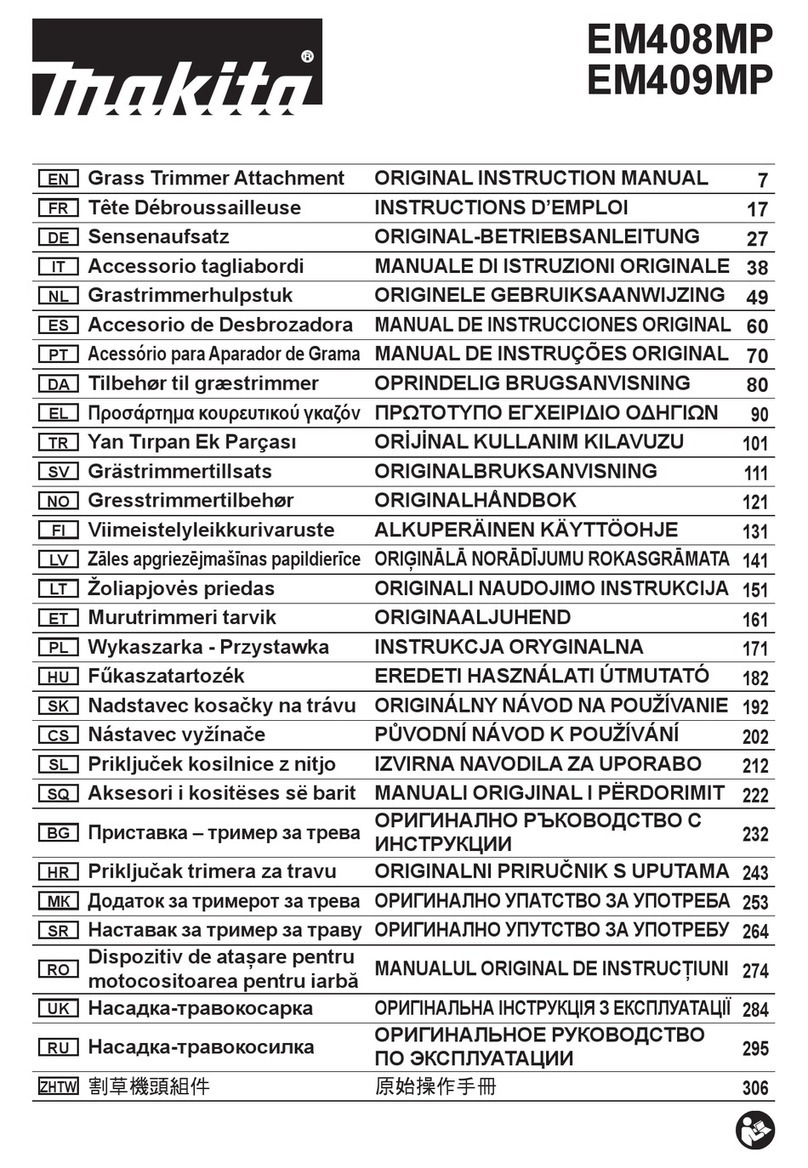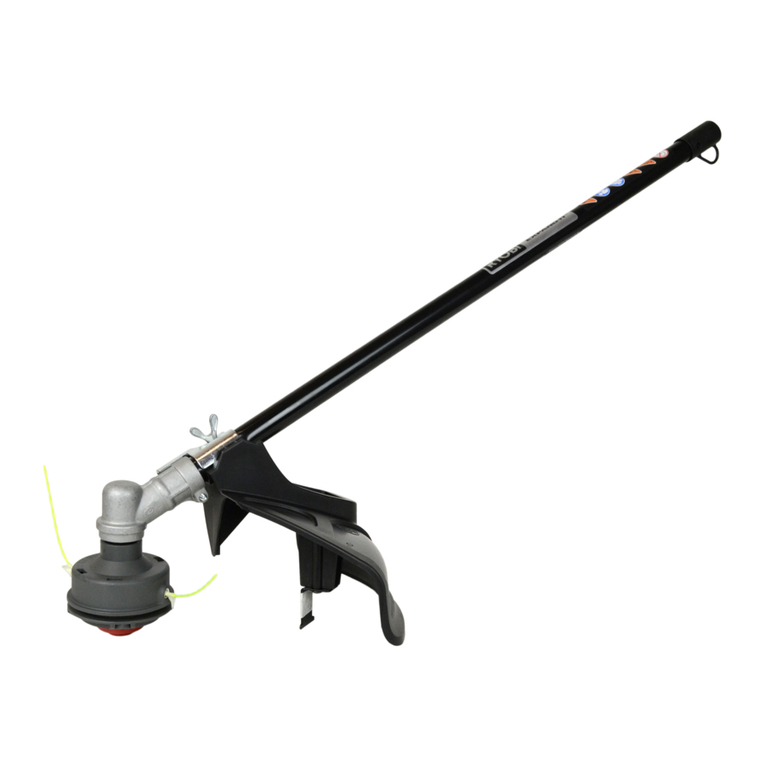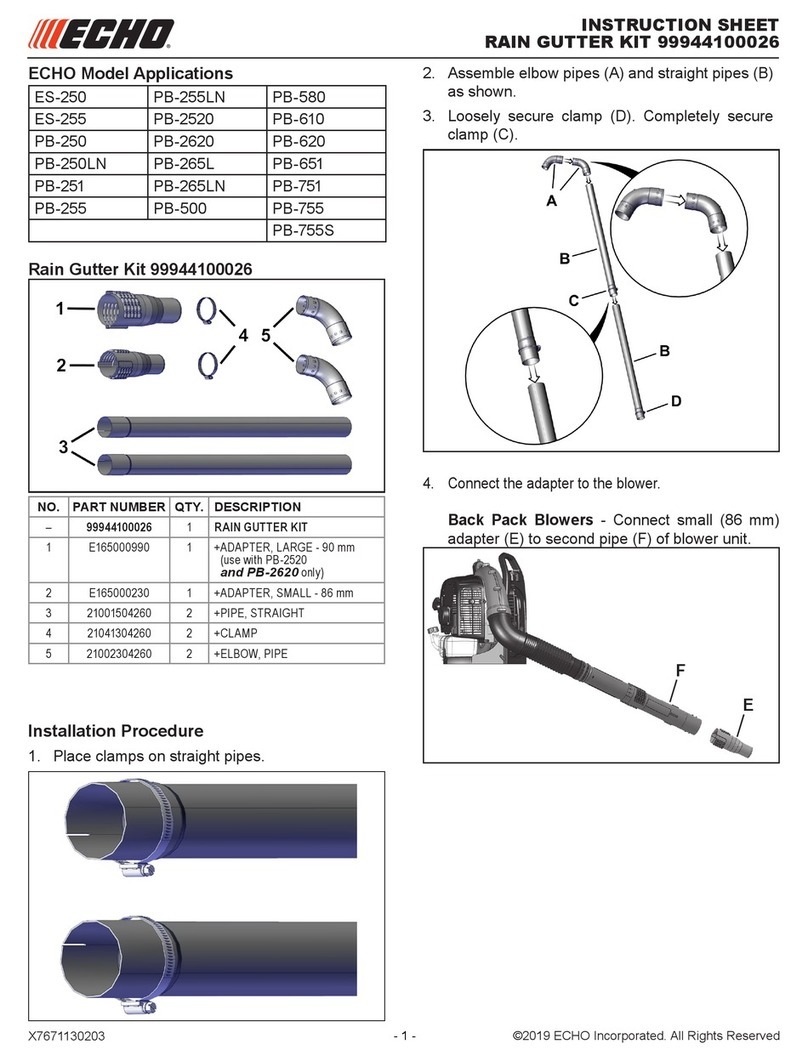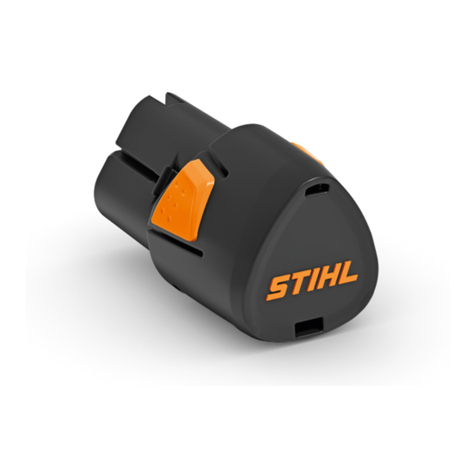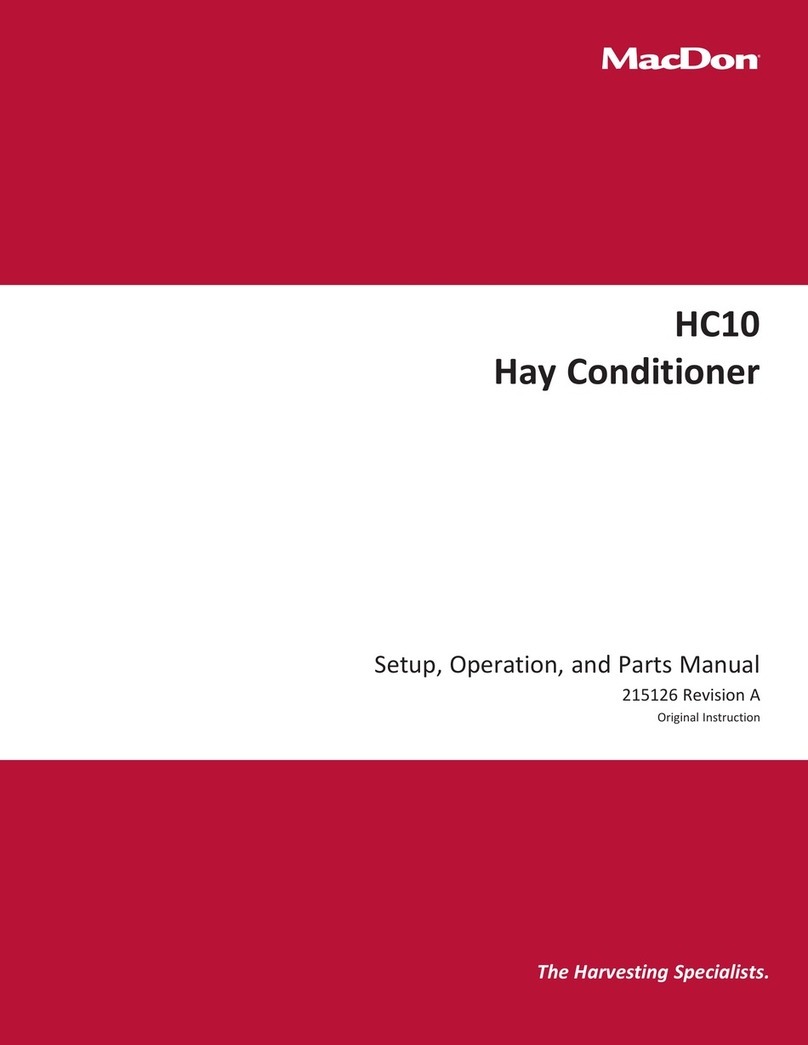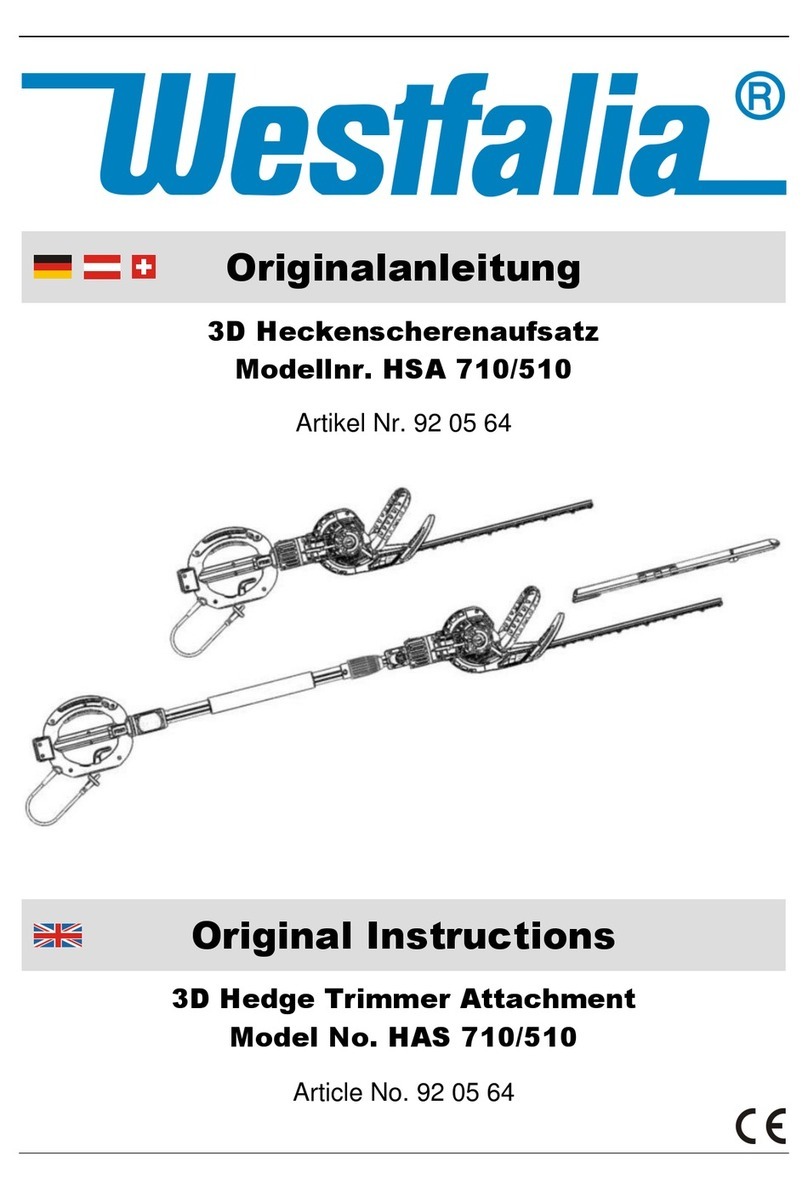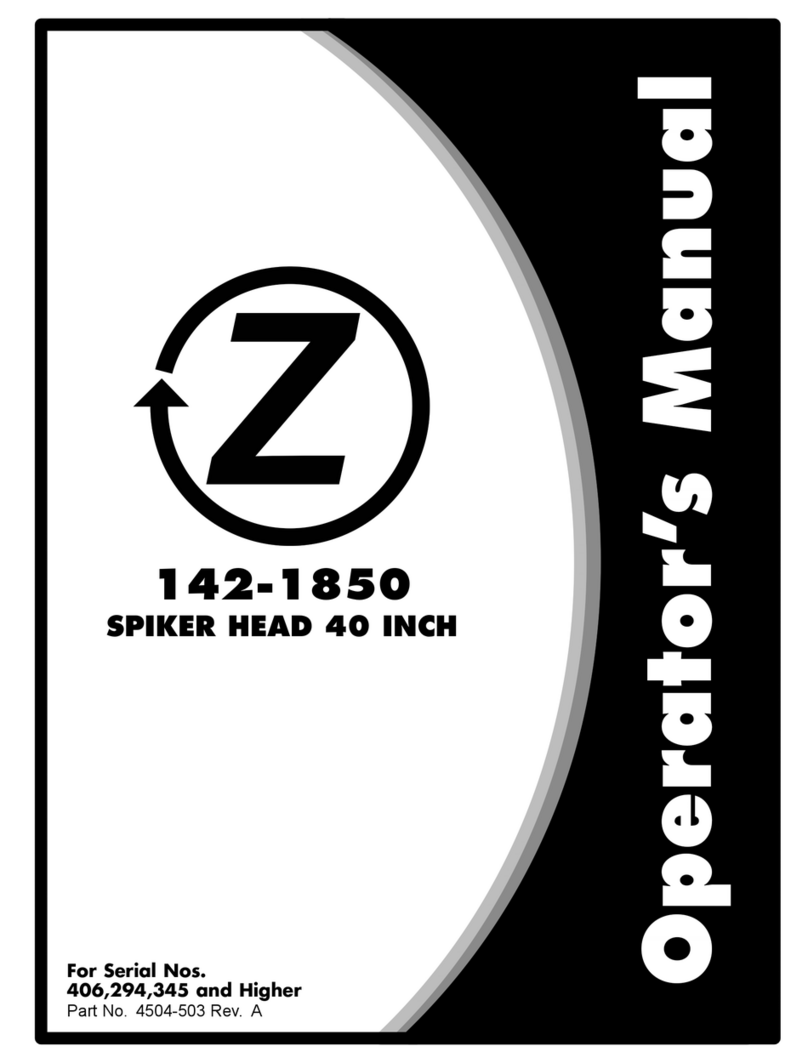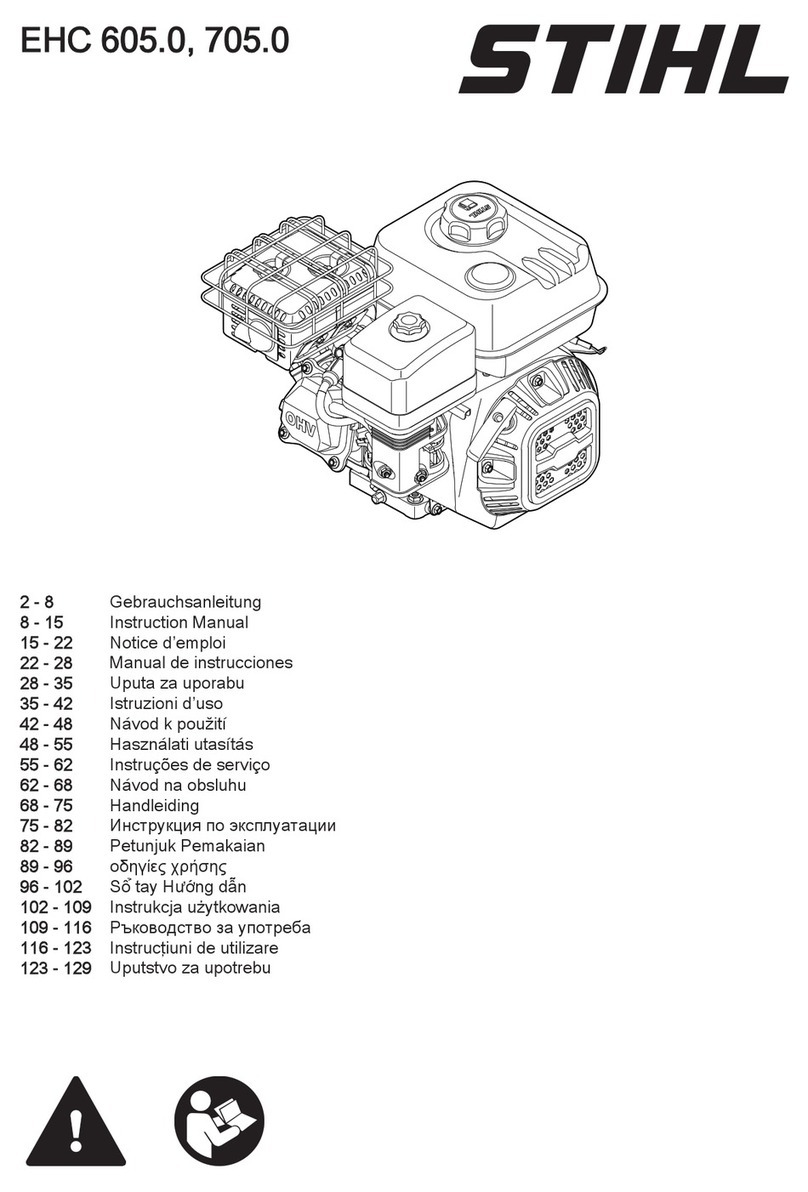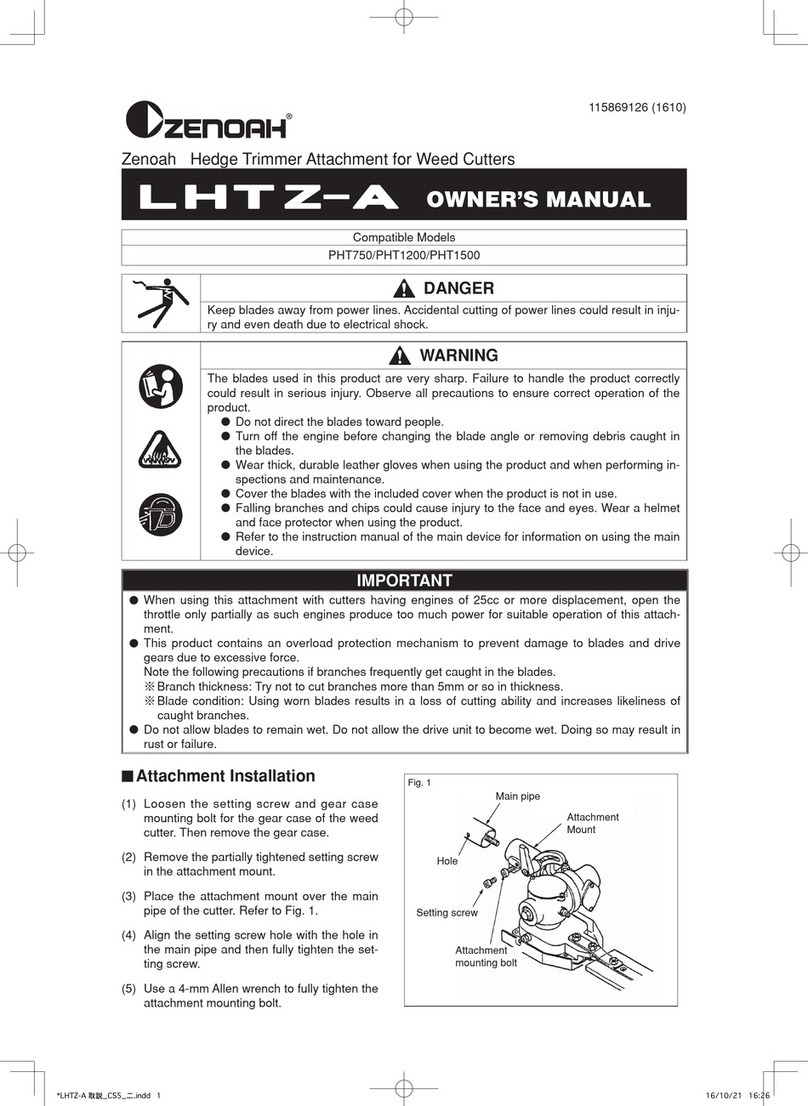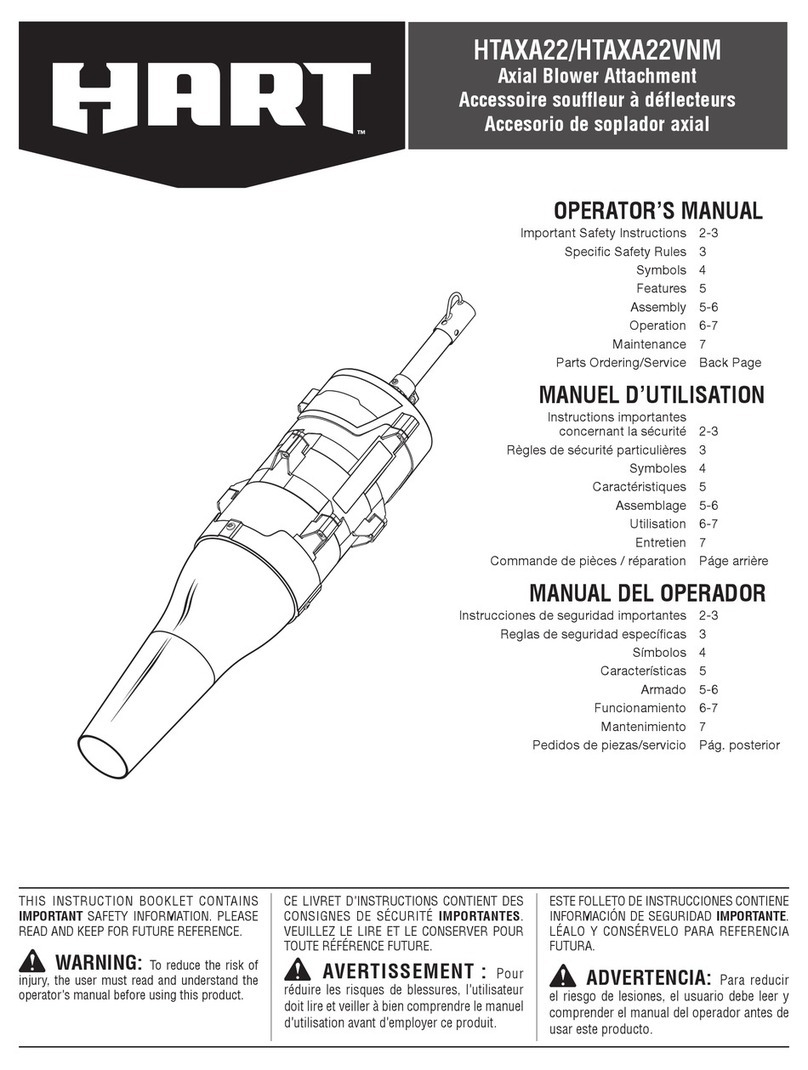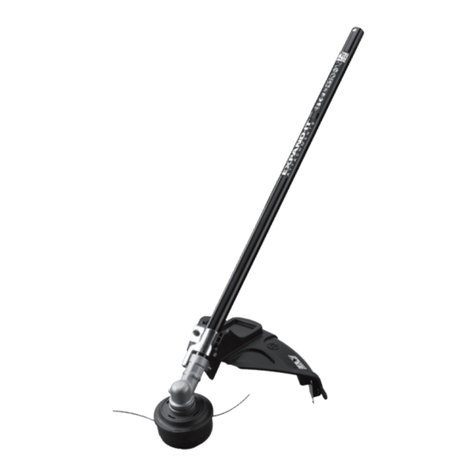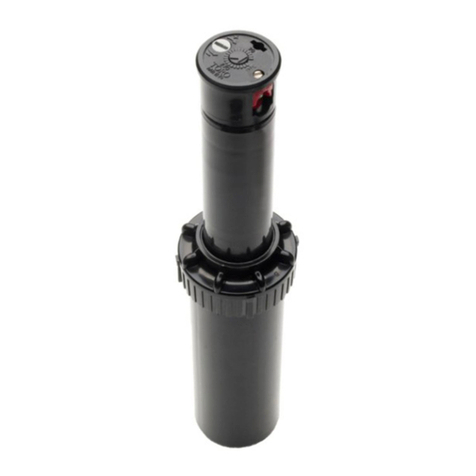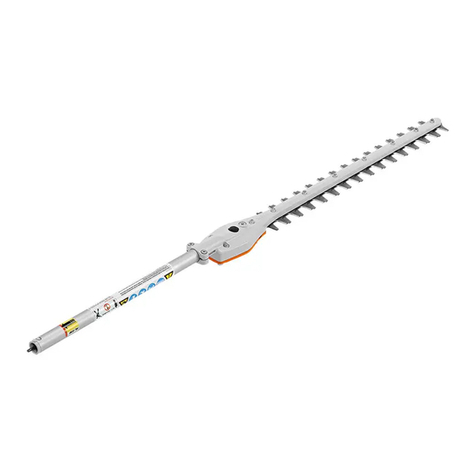
5ENGLISH
Starting up the machine
1. Keep children, bystanders and pets at
least 15 m (50 feet) away, when starting
up or using the machine. Additionally,
bystanders should wear eye protection,
as there is still a risk of injury from
thrown objects. Otherwise bystanders'
unexpected action or blade kickback may
cause serious injury to the operator and/or
bystanders.
2. Start and operate the machine only out-
doors in a well ventilated area. Operation
in a conned or poorly ventilated area can
result in death due to suocation or carbon
monoxide poisoning.
3.
Before starting, make sure that the cut-
ting tool has no contact with hard objects
such as branches, stones etc. as the
cutting tool will revolve when starting.
4. If the cutting tool rotates at idle, adjust
the idle speed so that it stops at idle.
Otherwise unintentional contact with moving
cutting tool may result in serious injury.
5. Stop the motor immediately if you notice
any trouble.
6. Make sure there are no electrical cables,
water pipes, gas pipes etc. that could
cause a hazard if damaged by use of the
machine.
Transportation
1. Stop the motor during transport.
Otherwise unintentional start-up may cause
injury.
2. When transporting the machine, always
attach the cover to the cutting blade.
Contact with bare blades results in injury.
3. Ensure safe position of the machine
during car transportation to avoid fuel
leakage.
4. Lift the entire machine from the ground
when carrying the machine. Dragging the
machine causes fuel tank damage and fuel
leakage, resulting in re.
Operation
1. Only use the machine in good light and
visibility. Use in the dark or poor visibility
area may cause unexpected accident.
2. Avoid using the machine when it is hard
to keep your balance, for example, work-
ing on a steep surface or windy day.
3. During operation, never stand on an
unstable or slippery surface or a steep
slope. During the cold season, beware of
ice and snow and always ensure secure
footing.
4. If you are approached, stop the motor.
Otherwise the rotating cutting tool may hit
the bystander and result in serious injury.
5. Clear the working area before operation.
Remove all objects such as rocks, bro-
ken glass, nails, wire, or string, which
can be thrown or become entangled in
the cutting attachment. Foreign particles
may damage the cutting tool and can cause
dangerous kickback.
6. To control the machine steadily, do the
following during operation:
— Hold the machine with both hands
rmly on your right side.
— Hang the machine on your shoul-
der(s) with the shoulder harness.
— Ensure a safe footing. Never work
on a ladder or in a tree.
— Avoid over-reach.
— Keep cutting tool below waist level.
— Keep all parts of your body away
from the rotating cutting tool and
hot surface.
Those action reduces the risk of injury.
7. If weeds or branches get caught between
the cutting tool and guard, always stop
the motor before clearing. Otherwise
unintentional blade rotation may cause
serious injury.
8. Never drop or throw the machine, unless
an emergency. If the machine drops or
hits something, immediately check for
fuel leakage, safety devices and other
damages. Operating an malfunctioned
machine may cause injury and/or re.
9. Inspect the cutting tool frequently, or
immediately after it hits a stone or other
hard objects. If the cutting tool breaks
during operation, the broken piece may y
and cause injury.
10. Stop the motor when inspecting,
cleaning or replacing the cutting tool.
Otherwise the cutting tool may rotate unex-
pectedly and result in serious injury.
11. Maintain proper control until the cutting
tool stops completely, when stopping the
motor or releasing the throttle trigger. A
coasting blade can cause injury.
12. Before starting the cutting operation,
wait until the cutting tool attains enough
speed for cutting. It reduces the risk of
kickback and entangling weeds.
13. Take a rest to prevent loss of control
caused by fatigue. We recommend to take
a 10 to 20-minute rest every hour.
